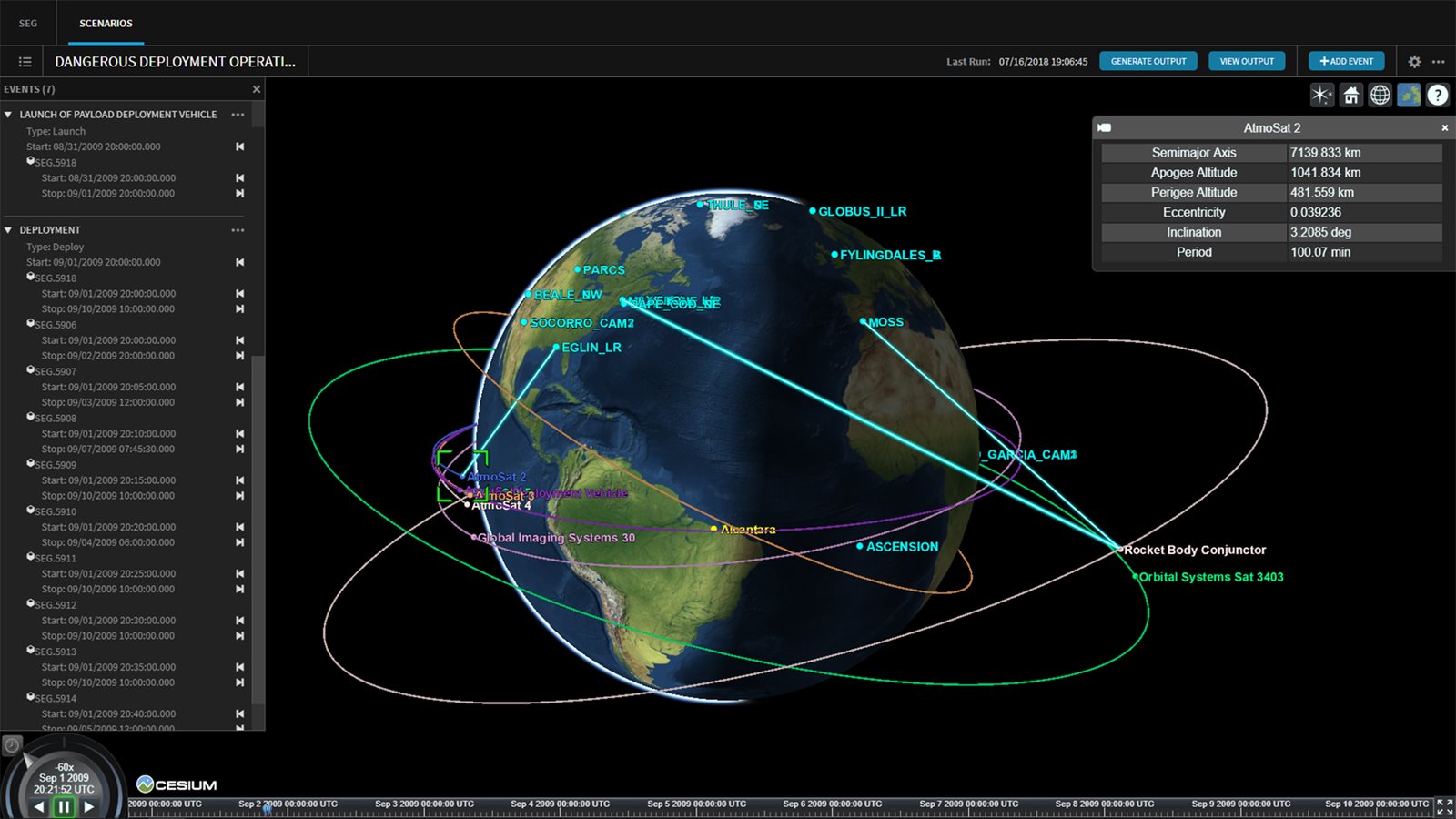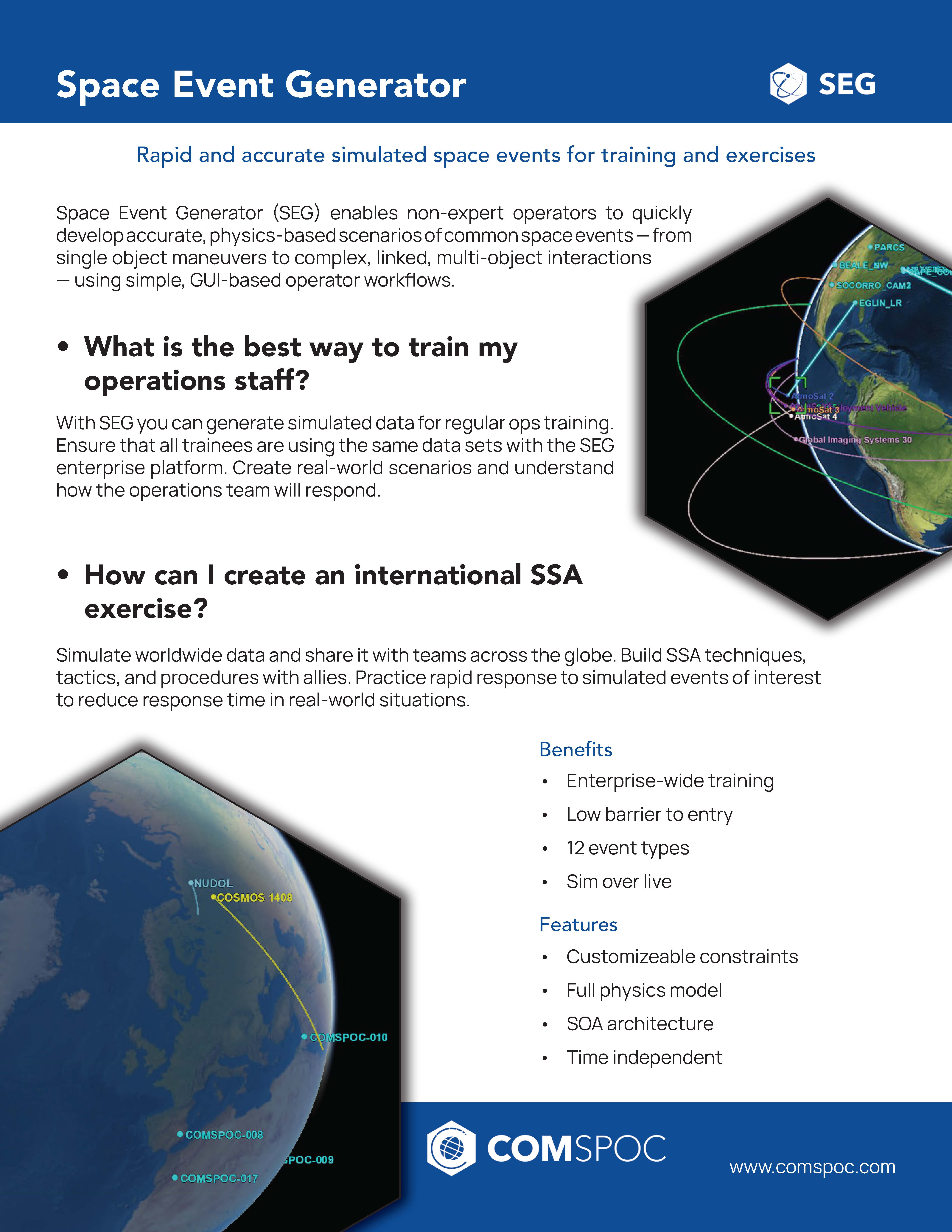Simulate space events for Test, Training, and Exercise (TTX) support.
As space becomes an increasingly dangerous environment for satellites, operators must be ready to detect and respond to potential threats. With Space Event Generator (SEG), you can quickly develop high-fidelity simulations of space events to test detection algorithms, train operators, and perform readiness exercises. SEG can simulate a wide assortment of space events, which describe types of behaviors conducted by satellites. These events can vary from simple maneuvers by single satellites to complex multi-satellite collisions and breakups. Link events together to create a scenario, select trackers and sensor cadences to process it, and produce a realistic set of simulated observations.



